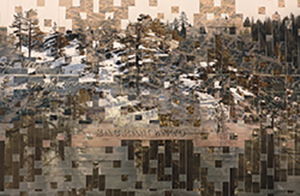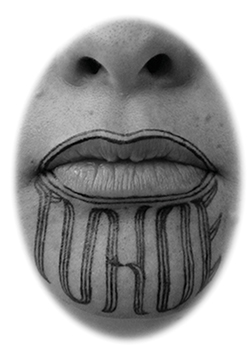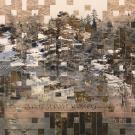
Kimowan Mechewais, Cold Lake Venus, 2007.

Sarah Sense, Hinushi 22 (detail), 2024.

Aimee Ratana, taku tuhoetana, 2009.

Larry McNeil, X’áant xwaanúk Tléil yee ushk’é, I'm angry you are bad, 2010.
Reflecting Lenses:
Exhibition Subtitle
Twenty Years of Photography at the Gorman Museum
- Rebecca Belmore
- Mervyn Bishop
- Dana Claxton
- Brenda Croft
- Lewis deSoto
- Shan Goshorn
- Tanya Harnett
- Zig Jackson
- Erica Lord
- Lee Marmon
- Larry McNeil
- Kimowan Mechewais
- Michael Namingha
- Shelley Niro
- Aimee Ratana
- Jolene Rickard
- Natalie Robertson
- Cara Romero
- Sarah Sense
- Hulleah Tsinhnahjinnie
- Anna Tsouhlarakis
- Will Wilson
For decades, the Gorman Museum of Native American Art has hosted artists who advance Indigenous visual sovereignty – understood as the assertion of Indigenous autonomy through visual media. Photographs are now central to the museum’s collection of contemporary art. Themes that are prevalent in the collection relate to social and environmental justice, connection to homeland, and Indigenous empowerment in the contemporary world. This exhibition presents highlights from the collection by more than two dozen Indigenous artists from North America, Aotearoa, and Australia.
Throughout its nearly two-hundred-year history, photography has been a tool for colonial projects across the globe. Non-Native photographers deployed images that dehumanized and stereotyped Indigenous people. The non-Native gaze produced narratives of vanishing cultures, primitive minds, and victims of progress. The work of early Indigenous photographers is seen as the emergence of a Native point of view. These images not only restore dignity to the subject, they reflect the priorities and realities of Indigenous experiences. Taking up the camera was an act of visual sovereignty.
Contemporary artists approach photography from a diversity of backgrounds including photojournalism, performance art, digital production, and film making. They produce visions of collective memory and counter narratives, in addition to portraits and landscapes. The subject of these images is Native presence. Many Indigenous artists have examined issues of self-representation through their artistic practice. In response, the museum uses the artists’ own words to present their ideas and artistic strategies.
- The Andrew W. Mellon Foundation Art Museum Futures Fund
UC Davis College of Letters & Science




